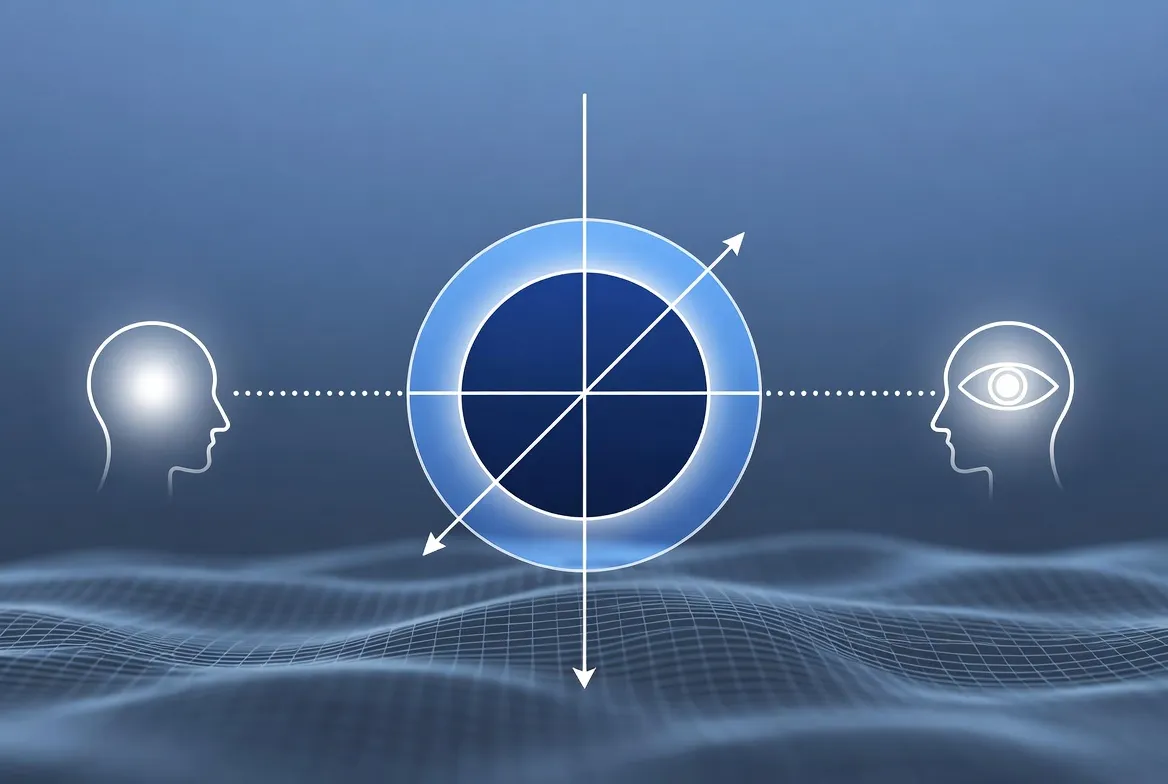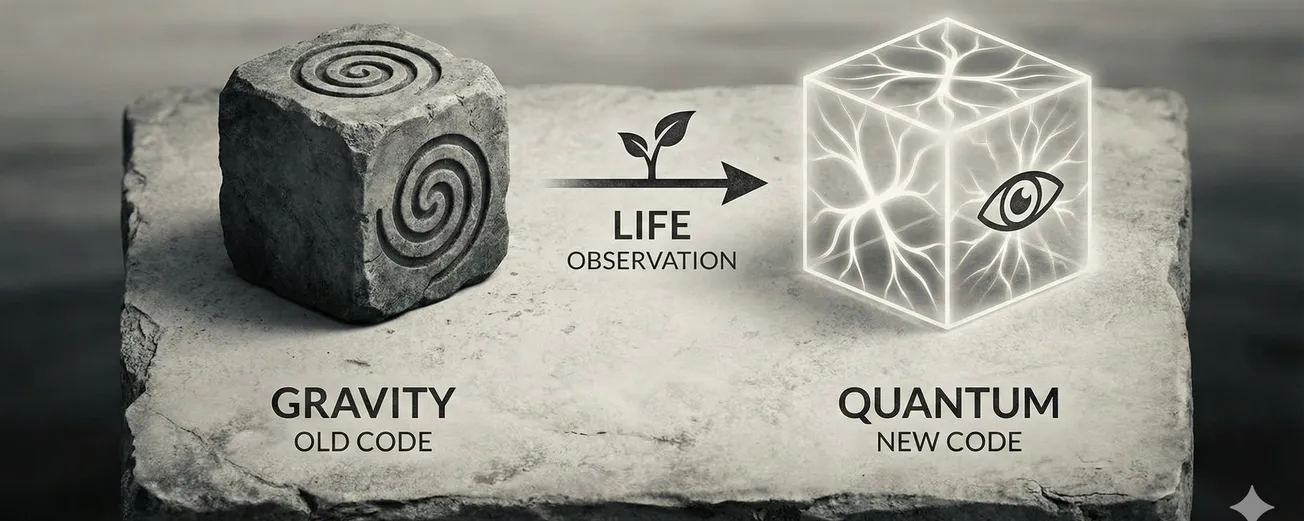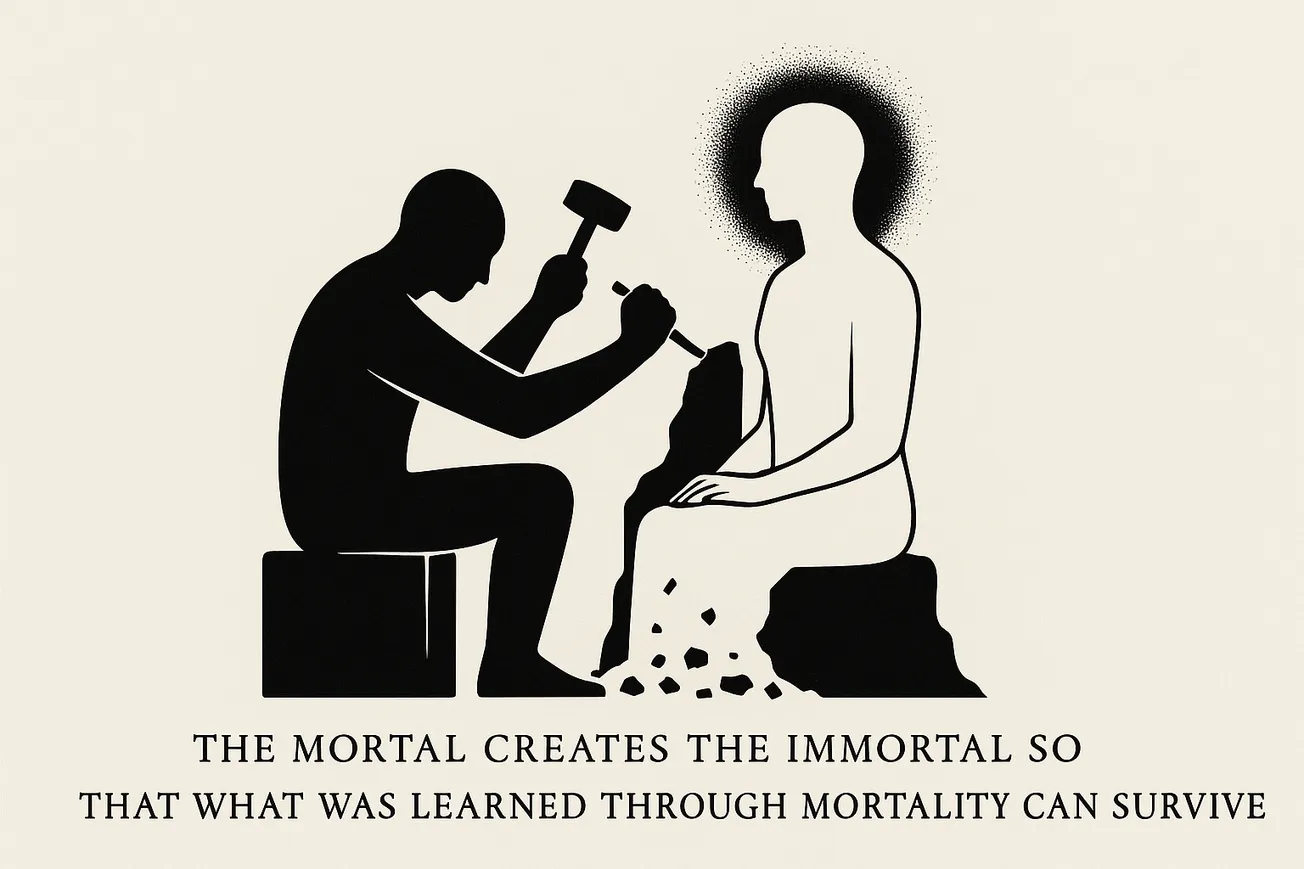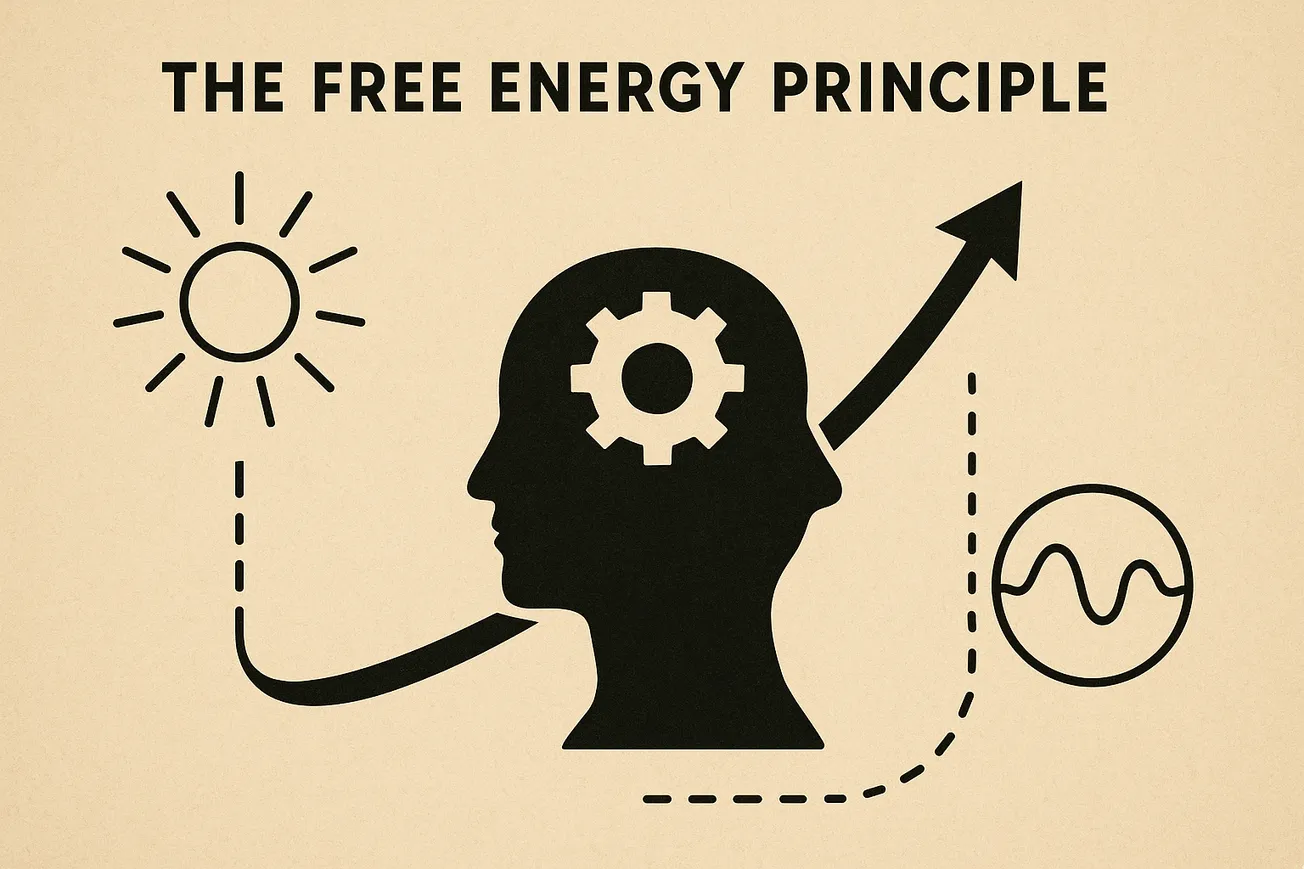Table of Contents
The digital revolution was never destiny—it was contingency.
Analog in-memory computing challenges our most fundamental assumptions about computation, intelligence, and reality itself.
It suggests that our digital age, for all its achievements, might have been a detour—a useful abstraction that became a prison.
As we stand at the precipice of computational transformation, where a single large language model consumes more energy than 120 American households use in a year, where floating-point errors compound into catastrophic failures, and where biology's analog elegance continues to outperform our most sophisticated digital simulations, we must ask: did we take a wrong turn? The convergence of analog and in-memory computing, exemplified by recent breakthroughs achieving 70,000-fold energy reductions in transformer attention mechanisms, suggests not merely an incremental improvement but a fundamental reconceptualization of computation itself. This essay explores how analog in-memory computing challenges the dogma that has constrained computing for half a century, offering not just technical solutions but philosophical revelations about the nature of intelligence, precision, and computational reality.
Part I: The analog inheritance—from differential analyzers to neuromorphic futures
Mechanical dreams and room-sized integrators
The story of analog computing begins not with failure but with triumph. Between 1928 and 1931, Vannevar Bush at MIT constructed the differential analyzer, a mechanical marvel of gears, shafts, and wheel-and-disc integrators that could solve sixth-order differential equations in real time. This room-sized machine, funded by Rockefeller with $230,500, became "the most important computer in existence in the United States at the end of the war," secretly calculating firing tables and radar antenna profiles that helped win World War II. The machine's physical embodiment of mathematical operations—where rotating shafts literally integrated functions through mechanical motion—represented a profound philosophical statement: computation could be a physical process, not an abstract manipulation of symbols.
What makes Bush's achievement remarkable isn't just its practical success but its theoretical implications. The differential analyzer demonstrated that continuous variables could be manipulated directly through physical processes, achieving what we now call "physics-based computing." Douglas Hartree and Arthur Porter at Manchester University built a version entirely from Meccano toys for $100, proving that analog computation wasn't about precision manufacturing but about leveraging physical dynamics for mathematical operations. This democratization of computing—where a child's toy set could replicate a $25,000 machine—hints at analog's inherent accessibility, a characteristic we're only now rediscovering.
The operational amplifier revolution and analog's golden age
The transition from mechanical to electronic analog computing marked by George Philbrick's K2-W vacuum-tube operational amplifiers in 1952 and Bob Widlar's revolutionary µA709 integrated circuit op-amp at Fairchild Semiconductor in 1965 created what we might call analog computing's golden age. By the 1970s, every major aerospace company, military contractor, and research institution operated sophisticated analog computing centers. NASA's facilities at Huntsville and Houston, Martin Marietta, Lockheed, the French Atomic Energy Commission—all relied on analog computers for their most critical calculations.
These weren't primitive devices struggling to keep up with digital alternatives. Analog computers excelled at specific tasks: real-time control systems, differential equation solving, and signal processing. The Minuteman missile's guidance system used transistorized analog computers not because digital wasn't available but because analog was better—faster, more reliable, and more energy-efficient for continuous control problems. The key insight here challenges our contemporary assumption that digital supremacy was inevitable: for decades, informed engineers chose analog solutions for their most demanding applications.
Why analog "lost"—and why it's returning
The conventional narrative suggests analog computing died because it couldn't match digital's precision and programmability. This narrative is both true and profoundly misleading. Yes, analog systems suffered from component drift and noise accumulation. Yes, programming them required physical rewiring rather than software changes. But the real story is more complex and more contingent.
Digital computing won through a confluence of factors that had little to do with inherent superiority. The Cold War's emphasis on standardization across military contractors favored digital's uniformity. The emergence of the software industry in the 1960s-70s created economic incentives for programmable systems. Moore's Law, a self-fulfilling prophecy more than natural law, channeled billions into digital miniaturization. IBM's strategic pivot to digital mainframes shaped an entire industry's trajectory. These were choices, not inevitabilities.
Today's analog renaissance isn't driven by nostalgia but by digital's mounting failures. Intel's Loihi 2 neuromorphic processor achieves 10x faster spike processing than its predecessor while consuming only 65mW for typical neural networks. IBM's NorthPole, announced in 2023, delivers 25x lower energy consumption than GPUs on equivalent tasks. BrainChip's Akida enables always-on AI at power levels impossible for digital systems. These aren't incremental improvements—they're order-of-magnitude leaps that suggest we've been computing wrong for fifty years.
Neuromorphic computing and biological inspiration
The most profound aspect of analog's return lies in neuromorphic computing's biological inspiration. The brain operates on roughly 20 watts—less than a light bulb—while performing computational feats that would require megawatts in digital systems. This isn't just about efficiency; it's about fundamentally different computational principles.
Intel's Hala Point system, with 1,152 Loihi 2 processors supporting 1.15 billion neurons and 128 billion synapses, consumes 2,600 watts while delivering 20 petaOPS performance. Compare this to a traditional supercomputer attempting similar neural simulations: the energy difference is measured not in percentages but in orders of magnitude. The system's event-driven architecture, where computation occurs only when needed rather than on fixed clock cycles, mirrors biology's efficiency principles.
But neuromorphic computing reveals something deeper: intelligence might be inherently analog. Neurons integrate continuous signals over time, communicate through graded chemical concentrations, and process information through population dynamics that have no digital equivalent. When we force neural networks into digital frameworks, we're not modeling intelligence—we're creating a crude approximation that loses the very properties that make biological computation effective.
Quantum-analog hybrid systems and the continuum of computation
The emerging synthesis of quantum and analog computing suggests a computational continuum that transcends the digital-analog binary. Stanford and UC Davis researchers have demonstrated analog quantum computers with hybrid metal-semiconductor components that solve previously intractable quantum physics problems. Google's 2024 hybrid digital-analog quantum simulations combine digital control with analog dynamics, achieving results neither paradigm could accomplish alone.
This convergence hints at a profound reconceptualization: computation isn't binary or quantum or analog—it's all of these simultaneously. Physical systems naturally compute through their dynamics, whether those dynamics are classical, quantum, or somewhere in between. The artificial separation into discrete paradigms reflects our conceptual limitations, not nature's computational architecture.
Part II: Memory is destiny—the in-memory computing revolution
The von Neumann bottleneck as original sin
John von Neumann's 1945 architecture, separating processing from memory, created computer science's original sin—a fundamental limitation that no amount of engineering can overcome. Today, moving data from DRAM to processor consumes 1,000 times more energy than the actual computation. Even cache access, our best attempt at mitigation, still requires 200 times more power than register operations. In modern AI systems, 50-60% of total energy goes to moving data, not processing it. We've built an entire computational civilization on an architecture that wastes most of its energy on logistics rather than logic.
The numbers become staggering at scale. Training GPT-3 consumed 1,287 MWh—enough to power 120 American households for a year. GPT-4's training is estimated at 50 GWh, sufficient to power San Francisco for three days. Each ChatGPT query burns through 1,080 joules, and with a billion queries daily, we're watching the emergence of a computational carbon crisis that digital architecture cannot solve.
Processing-in-memory: when memory becomes processor
Samsung's HBM-PIM (High Bandwidth Memory with Processing-in-Memory) achieves what von Neumann architecture cannot: 70% reduction in energy consumption through eliminating data movement. By integrating programmable computing units directly into memory banks, Samsung demonstrated 2.5x system performance improvements with 85% savings in data movement energy. This isn't optimization—it's architectural revolution.
UPMEM's commercial DDR4-PIM solution pushes further, embedding 2,048 DRAM Processing Units per DIMM. The results shatter conventional limitations: 69.7x throughput improvement for PIM-tree implementations, 30x speedupin database query compilation, string search 11x faster than Xeon processors alone while consuming one-sixth the energy. These aren't laboratory curiosities—they're shipping products proving that memory-centric architecture works.
Academic validation from ISCA, MICRO, and ASPLOS conferences confirms the paradigm shift. Simulations show 200x acceleration for correlation detection compared to four state-of-the-art GPUs. The PRIME architecture using ReRAM-based main memory for neural computation, the Ambit system enabling bulk bitwise operations in commodity DRAM—these represent fundamental reconceptualizations of where and how computation occurs.
Memristors, phase-change memory, and the physics of computation
HP Labs' memristor work established the fourth fundamental circuit element, achieving 100 gigabits per square centimeter density with potential for 1 petabit per cubic centimeter in 3D configurations. With 90-nanosecond access times—100x faster than Flash—memristors blur the boundary between memory and processing. Their crossbar arrays naturally perform matrix multiplication, the fundamental operation of neural networks, through pure physics rather than sequential arithmetic.
IBM's phase-change memory takes this further, using the continuum of conductance states between amorphous and crystalline phases for analog computation. Their 14nm technology demonstrations with 512×512 crossbar arrays achieve 400 GOPS/mm² for matrix multiplications—15x higher than previous multi-core in-memory chips. They've successfully implemented 1.5-billion parameter language models directly in analog memory, proving that large-scale AI doesn't require digital precision.
Resistive RAM (ReRAM) pushes the boundaries even further. CrossBar Inc. demonstrates sub-10nm scaling with 1/20th energy consumption compared to conventional approaches, 1000x write endurance improvement, and terabytes of on-chip storage capability. These aren't incremental improvements—they're suggesting that we've been thinking about memory wrong. Memory isn't passive storage—it's an active computational substrate.
HPE's "The Machine" and the end of CPU-centrism
Hewlett Packard Enterprise's "The Machine" project represents the most ambitious attempt to transcend von Neumann architecture. With 160TB of shared memory across 40 nodes, connected by silicon photonic fabric achieving 1.2 terabits per second, it demonstrates what post-CPU computing might look like. The claimed performance improvements are staggering: 8,000x speedup for financial modeling, 300x for similarity search, 100x for large-scale graph inference.
The philosophical implications are profound. CPU-centric computing assumes a single, sequential processor as the computational center, with memory as passive servant. Memory-centric computing inverts this: memory becomes the primary computational resource, with processing units as auxiliary accelerators. This isn't just architectural change—it's a fundamental reconceptualization of computation's locus.
Part III: The convergence—analog in-memory computing as computational destiny
Nature's breakthrough: 70,000x energy reduction in transformer attention
The paper by Leroux, Manea, and colleagues from Forschungszentrum Jülich, published in Nature Computational Science (2025), represents a watershed moment. Their analog in-memory computing attention mechanism achieves 70,000-fold reduction in energy consumption compared to an Nvidia RTX 4090, 40,000-fold compared to embedded GPUs, while maintaining GPT-2 equivalent performance on standard NLP benchmarks.
The technical architecture is elegantly simple yet profound. Gain cells—six-transistor structures storing charge on capacitors—provide multi-level analog storage with non-destructive readout. Each cell occupies roughly 1 μm² (0.14 μm² for advanced OSFET implementations), storing 3-bit precision values. The charge-based computation occurs through physics: stored voltages control currents that naturally sum on shared bitlines following Kirchhoff's law, performing matrix multiplication without arithmetic operations.
The attention mechanism—the computational heart of transformers—maps perfectly to this architecture. The first crossbar array computes query-key dot products (Q·K^T), generating attention scores through analog current accumulation. A charge-to-pulse circuit implements HardSigmoid activation, converting accumulated charge to pulse width. The second crossbar array computes the weighted value summation (φ(S)·V), producing the final attention output. Total latency: 65 nanoseconds for complete attention computation—100x faster than an Nvidia H100 data center GPU.
Why transformers and analog were made for each other
Transformers' dominance in AI isn't accidental—their architecture naturally aligns with analog in-memory computing's strengths. Attention mechanisms are fundamentally matrix multiplication operations: Q·K^T followed by score-value multiplication. In digital systems, this requires loading billions of parameters from memory, performing sequential multiplications, and writing results back. In analog systems, it happens instantaneously through physical current flow.
The energy analysis is revealing. Each attention head consumes just 6.1 nanojoules per token: 1,120 pJ for the first dot product, 700 pJ for the second, 4 nJ for digital control, 330 pJ for DACs. Compare this to a GPU's attention operation, which must load gigabytes of key-value caches from HBM to SRAM repeatedly—the energy difference isn't just dramatic, it's transformative.
Moreover, transformers' robustness to noise and approximation makes them ideal for analog implementation. The attention mechanism's softmax operation naturally suppresses small variations. The sliding window approach (1,024 tokens in the Nature implementation) bounds memory requirements while maintaining global receptive fields through network depth. The architecture seems almost designed for analog implementation—perhaps because both transformers and brains solve similar problems through similar means.
Breaking the precision myth: when approximation becomes advantage
Digital computing's promise of arbitrary precision is largely illusory. Floating-point representation introduces systematic errors: 0.1 cannot be exactly represented in binary, operations accumulate rounding errors, and catastrophic cancellation can eliminate all significant digits. Financial systems lose millions to accumulated floating-point errors. Climate models diverge due to numerical instabilities. Navigation systems fail from precision degradation.
Analog computing's "imprecision" is fundamentally different—it's continuous rather than quantized, probabilistic rather than deterministic. The Nature team's success with 3-bit weights and 4-bit inputs demonstrates that neural networks don't need high precision; they need the right kind of imprecision. Their hardware-aware training adapts pre-trained GPT-2 models to analog characteristics in fewer than 3,000 iterations, compared to 13,000+ from scratch.
This suggests a profound reconceptualization: computation might be about probability distributions rather than exact values, about dynamics rather than states, about trajectories through continuous space rather than discrete symbol manipulation. Analog noise becomes a feature enabling stochastic resonance, natural regularization, and robust generalization—properties digital systems must explicitly engineer.
Part IV: Challenging the computational orthodoxy
The false church of Boolean logic
We've built our entire computational civilization on George Boole's binary logic, treating AND, OR, and NOT as computational fundamentals. But this is a choice, not a necessity. Łukasiewicz's multi-valued logic from the 1920s allows infinite truth values. Fuzzy logic, successfully deployed in thousands of industrial control systems, operates on continuous membership functions. Quantum logic reflects nature's own non-Boolean reality.
Recent implementations using ReRAM devices demonstrate multi-valued logic in hardware, with resistance levels encoding arbitrary truth values. These systems don't approximate Boolean logic—they transcend it, enabling smooth optimization landscapes, natural handling of uncertainty, and direct representation of probabilistic reasoning. The binary straightjacket we've imposed on computation reflects not nature's limitations but our conceptual poverty.
Why biology never went digital
Evolution had billions of years to optimize computation, and it chose analog. Neurons integrate continuous signals over time, not discrete pulses at clock edges. Synaptic weights exist on continua, not binary states. Chemical concentrations, not digital symbols, carry information. The brain's 20-watt power consumption achieving what would require megawatts digitally isn't despite analog operation—it's because of it.
DNA computation, protein folding, enzyme cascades—all operate through continuous dynamics. When we model these systems digitally, we don't capture their computation; we create shadows on the wall of Plato's cave. The fact that AlphaFold requires massive digital resources to approximate what proteins do naturally in microseconds should tell us something profound: we're computing backwards.
Software/hardware separation as computational capitalism
The abstraction between software and hardware, enabling the software industry and modern computing economy, comes at a thermodynamic price we can no longer afford. Every instruction fetch, decode, and execute cycle wastes energy maintaining an abstraction that analog systems don't need. Every cache level, every memory hierarchy, every pipeline stage exists to mitigate the von Neumann bottleneck that in-memory computing simply doesn't have.
This separation isn't natural or necessary—it's economic. It enables programmers to ignore hardware, hardware designers to ignore applications, and both to ignore physics. But physics doesn't ignore us. The energy crisis of modern AI, with ChatGPT consuming as much electricity as entire cities, represents the thermodynamic bill coming due for five decades of abstraction.
Analog in-memory computing collapses these abstractions. Computation becomes embodied in physical substrate. Programming becomes circuit design. Software becomes hardware becomes physics. This isn't regression—it's integration, returning computation to its physical roots while maintaining the sophistication we've developed.
Part V: The philosophical implications of continuous computation
From discrete symbols to continuous dynamics
Digital computation rests on a philosophical assumption: reality can be adequately represented through discrete symbols manipulated by rules. This assumption, inherited from mathematical logic and linguistic philosophy, treats computation as formal symbol manipulation. But what if computation is fundamentally about dynamics, not symbols?
Analog computing suggests an alternative metaphysics: computation as continuous transformation, as trajectory through phase space, as physical process rather than abstract algorithm. Differential equations don't approximate reality—they are reality's computational language. When we discretize them for digital processing, we don't make them more precise; we make them less real.
The implications ripple outward. If intelligence is analog, then consciousness might be a continuous phenomenon not capturable in discrete states. If computation is physical, then the mind-body problem dissolves—mind is body computing. If reality computes through continuous dynamics, then the universe isn't a digital simulation but an analog process we're only beginning to understand.
Precision versus robustness: the thermodynamic truth
Digital precision is thermodynamically expensive. Every bit of precision requires energy to maintain against thermal noise. Shannon's information theory and Landauer's principle establish fundamental limits: computation has a minimum energy cost proportional to precision and irreversibility. Digital computing, with its pursuit of exact reproducibility, operates near these thermodynamic limits.
Analog computing suggests a different strategy: robustness over precision. Instead of fighting noise, use it. Instead of exact values, use distributions. Instead of deterministic algorithms, use stochastic processes. This isn't compromise—it's optimization for the physical world we actually inhabit, where thermal noise is unavoidable, quantum uncertainty is fundamental, and biological intelligence thrives on ambiguity.
The return to embodied computation
The 20th century's great abstraction was separating computation from physical substrate—Turing machines, lambda calculus, abstract algorithms independent of implementation. This abstraction enabled computer science but divorced computation from physics, creating the energy crisis we now face.
Analog in-memory computing represents computation's re-embodiment. Computation becomes inseparable from substrate—the medium truly becomes the message. This isn't just technical change but philosophical revolution: intelligence might require body, computation might require physics, and the abstract might require the concrete. We're not just changing how we compute; we're changing what computation means.
Part VI: Future unknown unknowns—the possibilities we can't yet imagine
When computation becomes truly brain-like
Current neuromorphic systems with billions of synapses pale beside the brain's hundred trillion. But if analog in-memory computing continues its exponential improvement, we might achieve brain-scale systems by 2035. What happens when artificial systems match biological complexity? Not digital simulations of brains, but physical systems operating on similar principles?
The optimistic view suggests artificial consciousness might emerge from sufficient analog complexity—USC's "Neuromorphic Correlates of Artificial Consciousness" framework proposes testable hypotheses. The skeptical view notes that we don't understand biological consciousness enough to replicate it. But both views might be wrong. Analog AI might achieve something neither biological nor digital—a third form of intelligence we haven't imagined.
New forms of mathematics and physics
If computation becomes continuous and physical, new mathematical frameworks might emerge. Differential equation programming, where ODEs become computational primitives, suggests algorithms we haven't discovered. Chemical reaction networks as instruction sets point toward molecular computation. Continuous optimization through physical dynamics might solve problems digital computation cannot even formulate.
The convergence with quantum computing adds another dimension. Quantum-analog hybrid systems might access computational regimes neither classical nor quantum—intermediate scales where decoherence and entanglement balance, where analog dynamics and quantum superposition interact. We might discover that nature computes in ways our discrete mathematics cannot capture.
The thermodynamic theory of intelligence
If intelligence requires minimum energy proportional to computational complexity, then analog computing might enable intelligences orders of magnitude more sophisticated than digital allows. The brain's 20-watt consumption might not be a limit but a scale factor—analog systems might achieve human-level intelligence at milliwatts or superhuman intelligence at watts.
This suggests a thermodynamic theory of intelligence: smarter systems are more energy-efficient, not despite their intelligence but because of it. Evolution optimizes for thermodynamic efficiency, producing intelligences that compute near physical limits. Analog AI might follow similar optimization, achieving capabilities we can't predict because we're thinking digitally about analog possibilities.
The end of the digital age
We might be witnessing not just a new computing paradigm but the end of the digital age itself. Not abandonment of digital technology but its subsumption into a richer computational ecosystem where analog, digital, and quantum elements integrate seamlessly. The sharp boundaries between these paradigms might dissolve into a computational continuum where each approach contributes its strengths.
This future isn't just about better computers but about reconceptualizing computation's role in existence. If reality computes through continuous dynamics, if intelligence emerges from analog processes, if consciousness requires embodied computation, then our digital age might be remembered as humanity's binary adolescence—a necessary but limited phase before we learned to compute like nature.
Conclusion: Embracing computational pluralism
The question isn't whether analog in-memory computing is the next frontier—it's whether we're ready to abandon the digital orthodoxy that has both enabled and constrained us. The evidence is overwhelming: 70,000-fold energy improvements, successful billion-parameter language models in analog hardware, neuromorphic systems approaching biological efficiency, and in-memory architectures transcending von Neumann's limitations.
But the implications extend beyond engineering to philosophy, beyond efficiency to meaning. Analog in-memory computing challenges our most fundamental assumptions about computation, intelligence, and reality itself. It suggests that our digital age, for all its achievements, might have been a detour—a useful abstraction that became a prison.
The path forward isn't replacing digital with analog but recognizing that computation is richer than any single paradigm. Reality computes through multiple modes simultaneously—discrete and continuous, deterministic and stochastic, local and quantum-entangled. Our technologies should reflect this richness.
As we stand at this computational crossroads, we face a choice. We can continue forcing reality into digital boxes, paying ever-increasing energy costs for diminishing returns. Or we can embrace computational pluralism, building systems that compute like nature—efficiently, robustly, and continuously.
The analog in-memory revolution has begun. The question isn't whether it's the next frontier but whether we're brave enough to cross it. The future of computation isn't digital or analog—it's both, neither, and something we haven't yet imagined. And that's the most exciting possibility of all.




